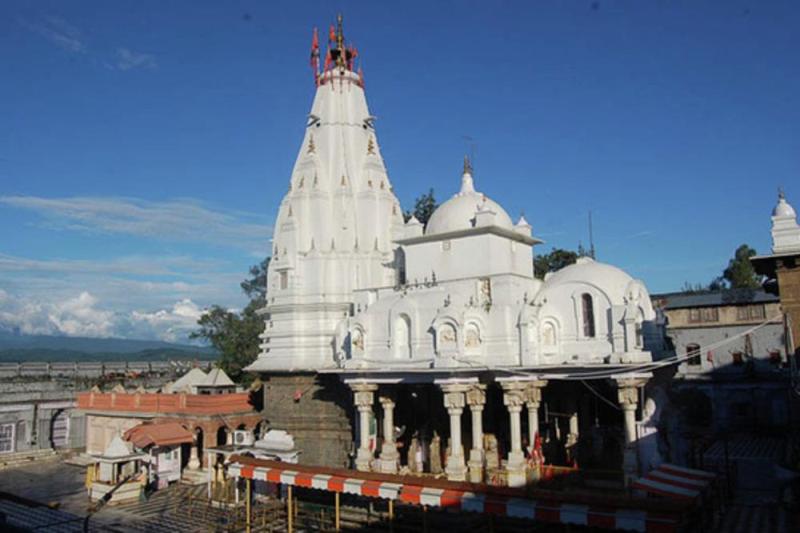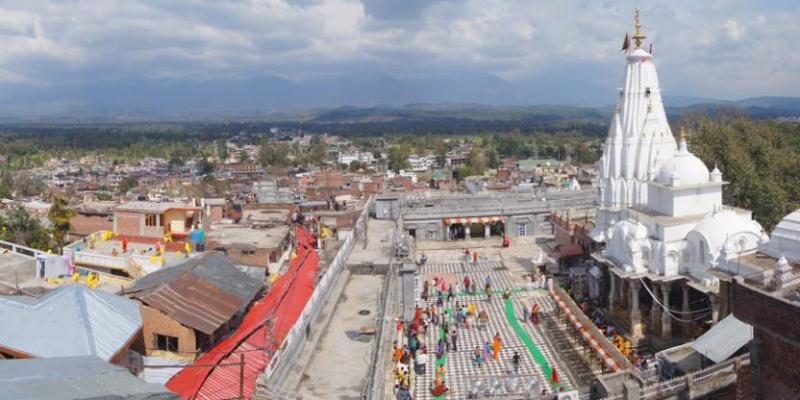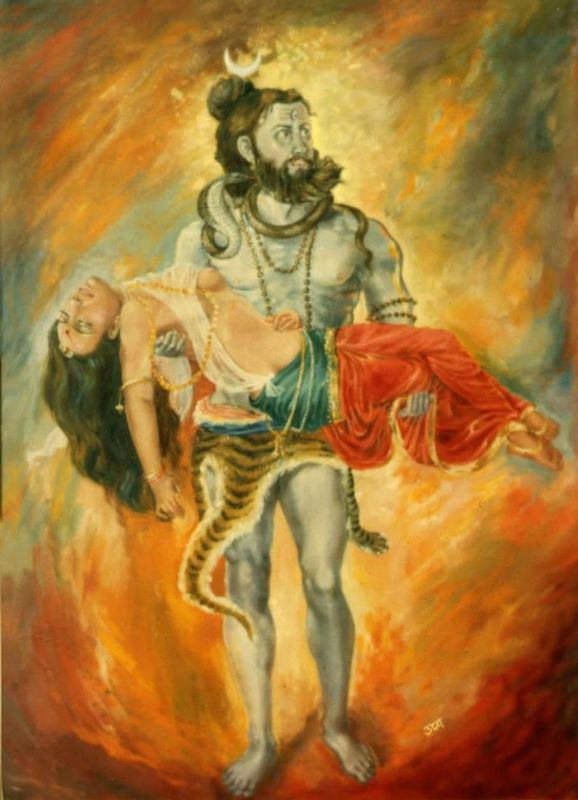Mata Kangra Devi Temple History & Story
Mata Kangra Devi Temple History
Mata Kangra Devi Temple is one of the most revered Hindu temples in India, which is dedicated to the goddess Vajreshwari, an incarnation of goddess Durga. It is also called Bajreshwari or Vajreshwari Mata Temple. Located in the Kangra district of Himachal Pradesh, the temple attracts thousands of pilgrims throughout the year. The temple is said to be almost a thousand years old; it is located in a small town called Nagarkot. There are various stories associated with the history of the temple.
- he temple is built in Nagara and Shikhar style of architecture.
- It follows the design of typical Indo-Aryan stone temples.
- There is a tower-like conical formation built of stone and decorated with carvings.
- The top of Shikhar has amalaka, the circular sun disc.
- It features almost all essential elements of a Hindu temple. It has a mandap (porch), garbh-griha (sanctum sanctorum), and Shikhar (tower).
- Fine carvings of Hindu deities in the temple are quite impressive.
- The outer walls of the temple display short inscriptions while its entrance gate has a drum house called Nagarkhana.
- The temple is surrounded by a stone wall like a fort.
Mata Kangra Devi Temple History & Story
Mata Kangra Devi Temple is one of the most revered Hindu temples in India, which is dedicated to the goddess Vajreshwari, an incarnation of goddess Durga. It is also called Bajreshwari or Vajreshwari Mata Temple. Located in the Kangra district of Himachal Pradesh, the temple attracts thousands of pilgrims throughout the year. The temple is said to be almost a thousand years old; it is located in a small town called Nagarkot. There are various stories associated with the history of the temple.
Architecture of the Temple
- The temple is built in Nagara and Shikhar style of architecture.
- It follows the design of typical Indo-Aryan stone temples.
- There is a tower-like conical formation built of stone and decorated with carvings.
- The top of Shikhar has amalaka, the circular sun disc.
- It features almost all essential elements of a Hindu temple. It has a mandap (porch), garbh-griha (sanctum sanctorum), and Shikhar (tower).
- Fine carvings of Hindu deities in the temple are quite impressive.
- The outer walls of the temple display short inscriptions while its entrance gate has a drum house called Nagarkhana.
- The temple is surrounded by a stone wall like a fort.
- The goddess rests in the form of a “Pindi” in the main hall.
Story Behind the Temple
According to legends, the most popular story behind this temple the sacrifice by Goddess Sati. Sati married Lord Shiva against the wishes of her father, Daksha Prajapati. Later, Daksha performed a great Yagya that was aimed at insulting his son-in-law Shiva, where all Gods and Goddesses were invited except Shiva. Enraged at the insult of her husband, Sati jumped into Yagya fire and sacrificed herself. Soaked in grief, Shiva picked up the remains of Sati and performed Tandava, the dance of destruction, throughout the Universe.
Mata Kangra Devi Temple History & Story
Mata Kangra Devi Temple is one of the most revered Hindu temples in India, which is dedicated to the goddess Vajreshwari, an incarnation of goddess Durga. It is also called Bajreshwari or Vajreshwari Mata Temple. Located in the Kangra district of Himachal Pradesh, the temple attracts thousands of pilgrims throughout the year. The temple is said to be almost a thousand years old; it is located in a small town called Nagarkot. There are various stories associated with the history of the temple.
Architecture of the Temple
- The temple is built in Nagara and Shikhar style of architecture.
- It follows the design of typical Indo-Aryan stone temples.
- There is a tower-like conical formation built of stone and decorated with carvings.
- The top of Shikhar has amalaka, the circular sun disc.
- It features almost all essential elements of a Hindu temple. It has a mandap (porch), garbh-griha (sanctum sanctorum), and Shikhar (tower).
- Fine carvings of Hindu deities in the temple are quite impressive.
- The outer walls of the temple display short inscriptions while its entrance gate has a drum house called Nagarkhana.
- The temple is surrounded by a stone wall like a fort.
- The goddess rests in the form of a “Pindi” in the main hall.
Story Behind the Temple
According to legends, the most popular story behind this temple the sacrifice by Goddess Sati. Sati married Lord Shiva against the wishes of her father, Daksha Prajapati. Later, Daksha performed a great Yagya that was aimed at insulting his son-in-law Shiva, where all Gods and Goddesses were invited except Shiva. Enraged at the insult of her husband, Sati jumped into Yagya fire and sacrificed herself. Soaked in grief, Shiva picked up the remains of Sati and performed Tandava, the dance of destruction, throughout the Universe.
Vishnu intervened and tried to stop this destruction by throwing his Chakra that cut through the corpse of Sati into 51 parts. Various body parts of Sati fell over the entire subcontinent of India and formed the sites known as Shakti Peethas, where these famous temples have been constructed. The left breast of Sati fell at this spot, making it a Shakti Peeth.
Another popular story associated with the temple is that the temple was built by the Pandavas at the time of Mahabharata. It is said that one day Pandavas saw Goddess Durga in their dream in which she told them that she was in Nagarkot village and if they wanted to receive the grace and protection of the Goddess, then they should construct a temple of her otherwise they will have to face the wrath of the Goddess. So, a temple was erected there the same night.
History
Major Attractions
Makar Sankranti Festival
The annual Makar Sakranti festival is celebrated with great pomp and show at the temple. It is said that after killing Mahishasura in a battle, the Goddess was injured. To heal those wounds, the Goddess had applied butter on her body in Nagarkot. Thus, during the festival, the Pindi of Goddess is soaked in butter, and then water is poured on the idol 100 times; finally, the idol is decorated with flowers. This week-long festival is celebrated in the second week of January every year.
Aarti
This is the most significant ritual that takes place in the morning and evening every day. It is performed five times daily in the temple. It is also believed that attending Aarti consumes negativity of mind and soul.
Bhairva Temple
The idol of Bhairava Nath is placed on the left side of the temple, which is almost 5000 years old. Bhairava Nath is considered to be an incarnation of Lord Shiva. It is believed that visiting the Bhairava temple brings good fortune.





🙏🏻🙏🏻
ReplyDelete